Let’s Get It Clear: Getting power under control
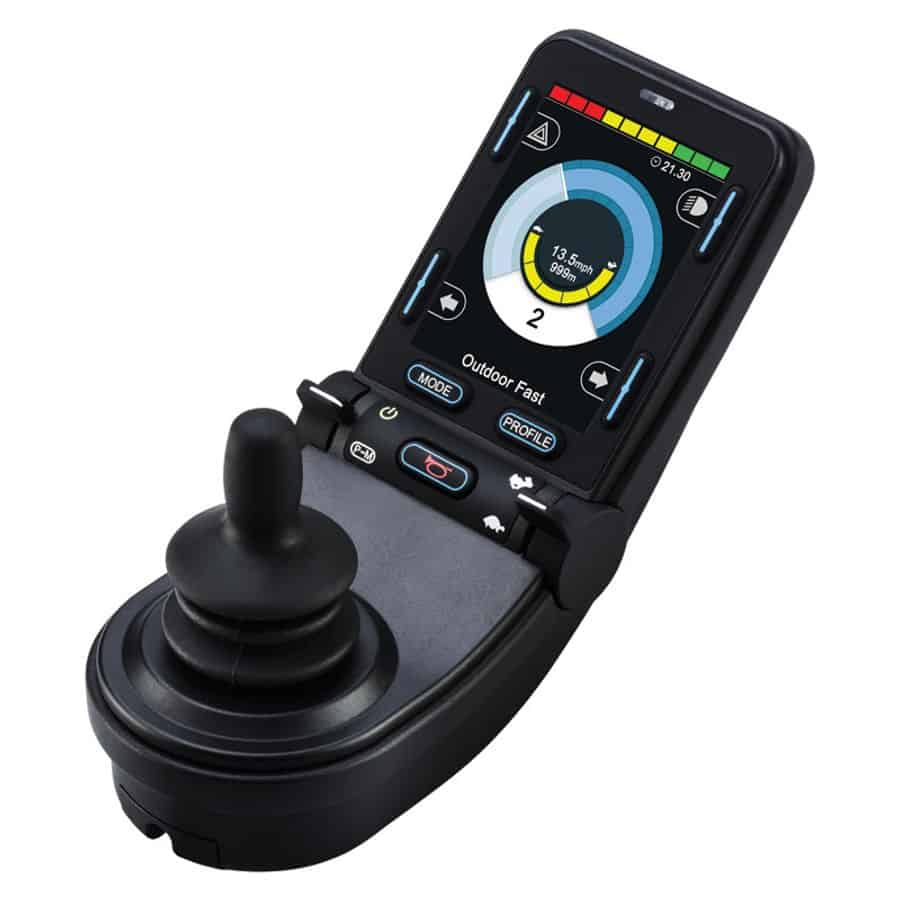
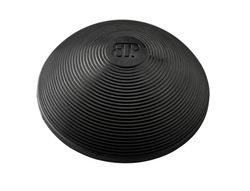
Most electrically powered wheelchairs make use of a joystick for the occupant to control and drive the wheelchair. The controllers to which the joysticks are attached are usually positioned at the end of a wheelchair arm support, and with a very standardised joystick handle. This article looks at alternatives that can make it easier for movement-impaired occupants to manage the joystick and provide finer control of the wheelchair.
If a person needs an electrically powered wheelchair, this probably means that they have impaired mobility. This impairment may indeed only affect the lower body, but in many cases this will also affect the upper body.
To drive their wheelchair they are standardly asked to drive with a joystick which needs some higher degree of dexterity. In addition, the joystick is commonly positioned where it is not going to be in the easiest place to provide fine motor control.
So what can be done to make the job of driving and controlling the wheelchair for a person with impaired mobility?
What can we do to make the joystick easier to handle?
Joystick handles have derived from designs created for operating electronic game controllers, and therefore for use by people with unimpaired manual dexterity.
This is why there is an after market for alternative handles that can be easier to handle. Some examples are shown below, and other solutions such as ‘sticky’ surfaces are on offer.
One approach is to increase the surface area, and this can be achieved by ‘mushroom’ or domed handles (Fig. 2) which fit into the palm of the hand. These often have a ribbed surface to help stop the hand from sliding off. For those with a weak grip, this design does not need much force to control.
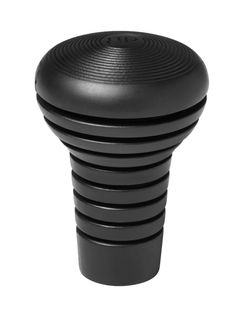
A refinement to this design is the ‘grooved mushroom’ handle (Fig. 3) which adopts the best features of several other models. Its hand-filling shape, top and side grooves, and height-adaptability (you can cut off lower sections to give it less height) make it ultra-versatile. The top and side grooves give superior grip.
The grooved shaft and the ability to tuck the fingers below the knob make driving easy for users grasping from the side. While having a useful height for upright gripping, its height is easily shortened for palmar hand position or fingertip control. A flexible shaft dampens vibrations while driving and reduces the risk of damage to the electronic controls.
For users who have a challenge of keeping their hand on the handle, a U-shaped handle is the answer (Fig. 4). Where the handle is made from a thermoplastic that can be warmed up in a bowl of boiling water or with a heat gun, the ‘wings’ of the U can be reshaped and formed into the ideal position for the user. This can be form-fitting and ergonomic with a curved shape and waterfall edge to support the fingers or wrist while driving.
A completely different concept is that which is incorporated into a flexible straight joystick handle (Fig. 5). This can be controlled by even the outer joint of one finger, and the amount of leverage can be adjusted by the user by how far out along the length the handle is held. The whole shaft is flexible to reduce aggressive forces on the controller.
Be aware of the risks
There are risks that should be taken into account with a replacement handle.
Standard knobs usually incorporate a skirt at the base to protect the gaiter – the flexible component that prevents dirt and debris getting into the joystick bearing. The gaiters are often very thin and can be easily damaged. They may also degrade over time due to contact with skin oils, or from friction. It’s important to protect them.
If the new knob is too heavy, it can interfere with safe release of the joystick.
An alternative handle, such as an inflexible T-handle, can result on the user placing too much force through the handle into the controller, and damaging the latter as a result.
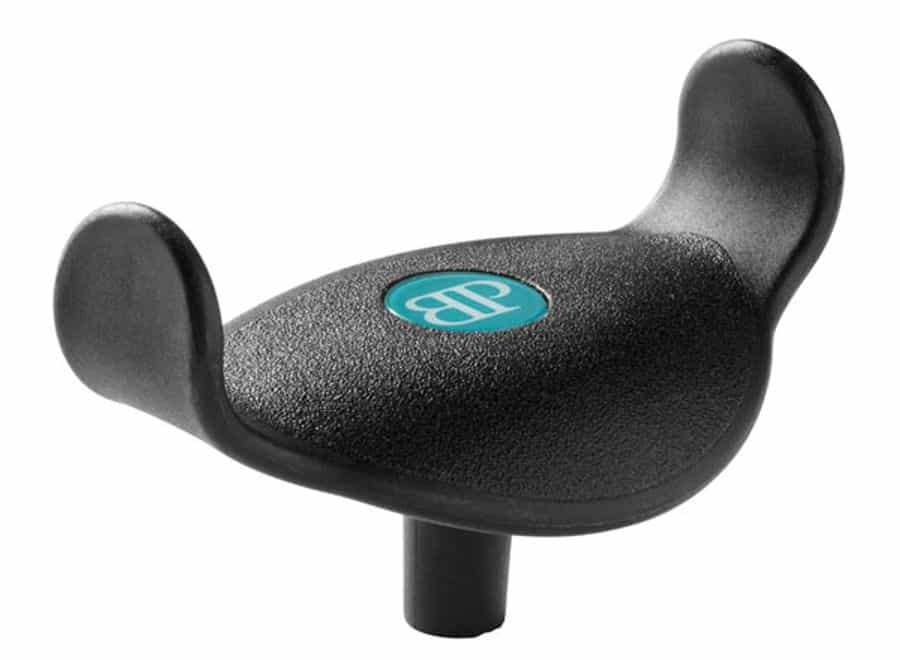

Where and how can we position the joystick to make driving easier
If you were trying to do something that requires fine motor control, such as colouring in a detailed line drawing, you would not place the paper off to your side. So why, when we ask people to do something that can require fine motor control such as controlling a joystick, do we place that off to the side. A central position would be optimal. Unfortunately, ordinarily a controller fixed in a central position would impede access to the wheelchair.
The simple answer is to use a system which attaches to the tubing holding the arm support or similar part of the chair frame, and have a swing-away, and then locking, mechanism which can hold the controller in a central position for driving, and then have it swing-away to allow access to the wheelchair seat (Fig. 6).
There are, of course, options for mounting joysticks elsewhere (Fig. 7), and/or for alternative controls. The latter is a topic for a future article.
Ideas from out of the box
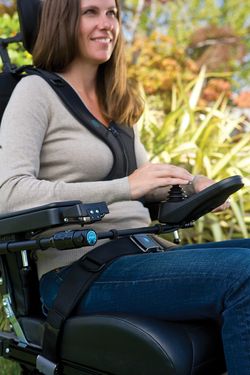
One wonders how much research has been carried out on the ergonomics overall, and the specific effects on the different joints along the arm from the fingers to the shoulder, of different hand positions to control a joystick, and what’s best for an offset joystick as compared with a midline joystick.
For many wheelchair occupants, especially when the joystick is off-centre, they choose to place their hand on top of the joystick, involving pronation of the hand.
For these drivers, I wondered some years ago whether it would be possible to hide the controller in the arm support of the chair, and the chair be driven by the occupant moving a surface that could just look like a (separate) extension of the arm support.
In day-to-day normal office life, a number of people suffer from carpal tunnel syndrome which affects their ability to use a standard mouse. For these individuals, an ergonomic vertical mouse such as the one shown in Figure 8, can be less painful and more effective.
This hand position, akin to holding a cup handle, might be better suited to their hand position for a number of wheelchair users when driving their wheelchair, and indeed is often the position of the hand adopted by users of standard joystick handles.
In conclusion

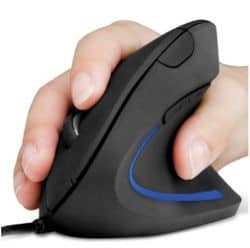
There’s a variety of options available that can be used with joystick controllers which provide for more ergonomic joystick control and positioning that can help a powered wheelchair user drive more easily, and also, importantly, place less strain on the joints of their upper body and parts of the arm.
Further items can be found at www.beshealthcare.net. If you are interested in receiving further information on the topic, please contact 
Dr Barend ter Haar has been involved in seating and mobility for over 30 years, including lecturing internationally and developing international seating standards.
Click to read more from the ‘Let’s get it clear’ series from Dr Barend ter Haar


